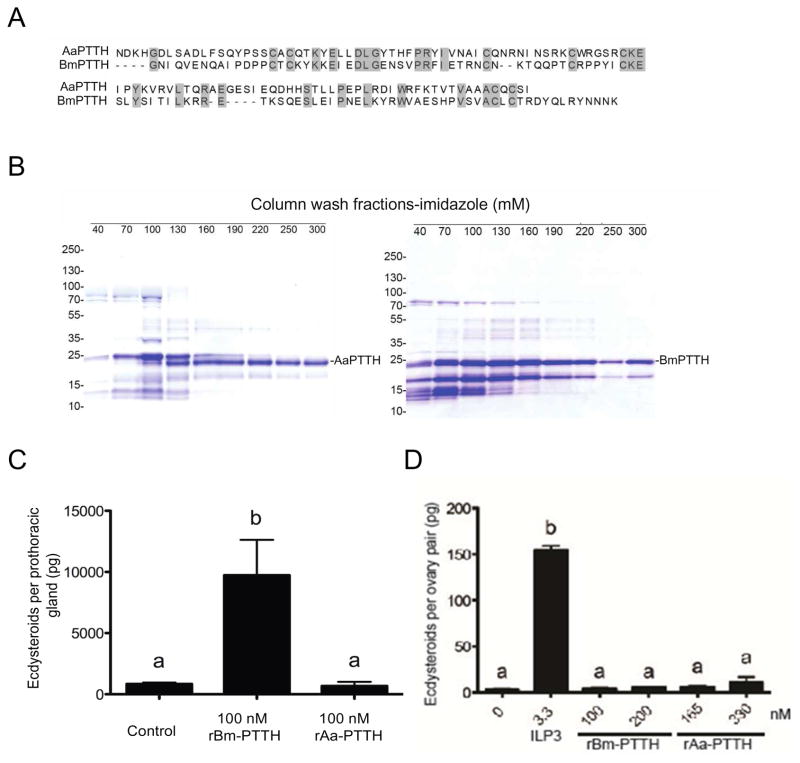Fig. 5.
PTTH has no stimulatory effect on ovaries. (A) Alignment of mature PTTH from A. aegypti (AaPTTH) and B. mori (BmPTTH). Identical amino acids including 7 conserved cysteines are shaded in grey. (B) For each PTTH expression construct, the soluble exclusion body of E. coli was collected after induction with IPTG and the corresponding recombinant protein purified by Ni-NTA chromatography. The soluble lysate and corresponding eluates after Ni-NTA chromatography and elution using increasing concentrations of imidazole (mM) were subjected to SDS-PAGE under reducing conditions followed by staining with Coomassie Brilliant blue. Each lane shows the elution products at a given imidazole concentration with >220 mM imidazole primarily eluting proteins corresponding to the predicted masses of AaPTTH (left gel) and BmPTTH (right gel). Molecular mass markers are indicated to the left of each gel. (C) ECD production by one B. mori PTG after a 3 h incubation in TC100 medium alone (Control) or with 100 nM of rBmPTTH or rAaPTTH. rBmPTTH stimulated a significance increase in ECD in the medium relative to the control (F2,26=14.4; P<0.0001). (D) ECD production by one A. aegypti ovary pair after a 6 h incubation in Sf-900 SFM II medium alone, medium plus 330 nM ILP3 or two concentrations of rBmPTTH (100 or 200 nM) or rAaPTTH (165 and 330 nM) (F7, 59= 69.2, P < 0.0001). Determination of ECD in the medium, data presentation and statistical analyses in (C) and (D) were performed as in Fig. 1.

